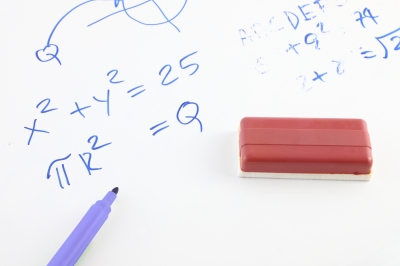Every real estate investing strategy has some type of formula that is used by professional investors to help them quickly qualify a particular property. These formulas are often tweaked by the investor to suit their specific needs, and the formula is also influenced by the prevailing market fundamentals, as well as the choice of exit strategy.

Image via Freedigitalphotos.net
In this particular article we're going to examine the "standard" formula that is used when the strategy desired is to sell a residential property quickly, to another investor, for a fast cash profit.
For details on the strategy we are discussing today, you may wish to refer to my previous article that explains this strategy and how it works.
The basic "fast cash" formula used by professional real estate investors looks like this:
ARV X 65% - Repairs - Profit = MAO
ARV refers to the After Repair Value. This is the likely appraised value or selling price after all repairs are completed and the property is ready to rent or resell. This number is crucial because everything else is derived from the ARV.
During the housing boom ARV's kept rising year after year, meaning that investors ended up paying more and more for investment properties. When the market collapsed on the investor side, many investors were wiped out because they had bought properties using ARV's that were too high. This had resulted in offer prices that were too high. In the end the investors were stuck with properties that they had paid too much for. Accurate ARV numbers are a must.
Next, the ARV is multiplied by a percentage. In our example formula we are showing 65%. Since the strategy is to sell the property quickly for a fast cash profit, the 65% multiplier is used as a way to leave money on the table for your buyer. If there is not enough profit in the deal for another buyer, you will not be able to sell the property quickly, if at all.
Let's say that the subject property is estimated to have an ARV of $100,000. If you multiply $100,000 times 65% you get $65,000. Essentially what you are doing is taking 35% off of the top to leave as a profit margin for your investor buyer. This percentage can be even lower today, leaving more money on the table for a prospective buyer. With property values down, a savvy investor may lower this percentage to say, 50%. This helps insure that the property can be resold or "flipped" quickly.
If an investor is planning to sell a finished property to an owner occupant, instead of another investor, this percentage could be as high as 80%, giving you as the buying investor a higher offer price and an advantage when making an offer. So the percentage can be raised or lowered depending on the situation and what you plan to do with the property.
Repairs are the next item in the formula. The idea is to subtract the total cost of all repairs that will need to be done to get the property up to the anticipated After Repair Value. Repair costs vary from one region of the country to another. Investors usually develop a good feel for quickly estimating repairs after they have some experience.
It's a good idea to have a professional contractor or "handyman" do a repair estimate for you if you have no experience with this. I have found that a good rule of thumb for repair costs is to keep repairs below 20% of the ARV unless you plan to live in the property yourself. If you exceed a 20% repair budget, it may be more difficult to keep your profit spread in tact.
Profit is the next item. This is referring to YOUR desired profit goal. You've already accounted for your investor-buyers profit margin when using the 65% multiplier already discussed. Insert the number you want to use as your gross profit margin. The total amount of profit you can reasonably expect will largely depend on the ARV of the property. Generally the higher the ARV, the more profit you can include for your share. While profit totals do vary from one deal to the next, a ten to twenty percent profit margin is a good rule of thumb for what to expect. On a $100,000 ARV that would be $10K to 20K. On a $1,000,000 ARV your profit could be $100,000 or more.
So, here is the entire formula broken down, using numbers in place of the words above:
$100,000 X .65 = $65,000 minus repairs of $10,000 minus $10,000 (profit) = $45,000 Maximum Allowable Offer.
In other words, if your property will be valued at $100,000, you leave $35,000 for your investor-buyer's "spread", repairs will cost $10,000 and you wish to gross $10,000 on the deal, you'll need to buy the property for no more than $45,000. If you luck out and buy it for less, you'll make even more. If you have to pay $50,000 instead of $45,000 you'd end up grossing about $5,000 for yourself. Keeping your buy price at or below the MAO - Maximum Allowable Offer will help insure that you can sell the property quickly and make yourself a fast cash profit.
--------------------------------------------------------------------------------------------------------------
Donna S. Robinson is a real estate investor, market analyst and investing coach located in Atlanta, GA. Follow her on twitter at donnaconsults. Read her blog at www.RealtyBizConsulting.com